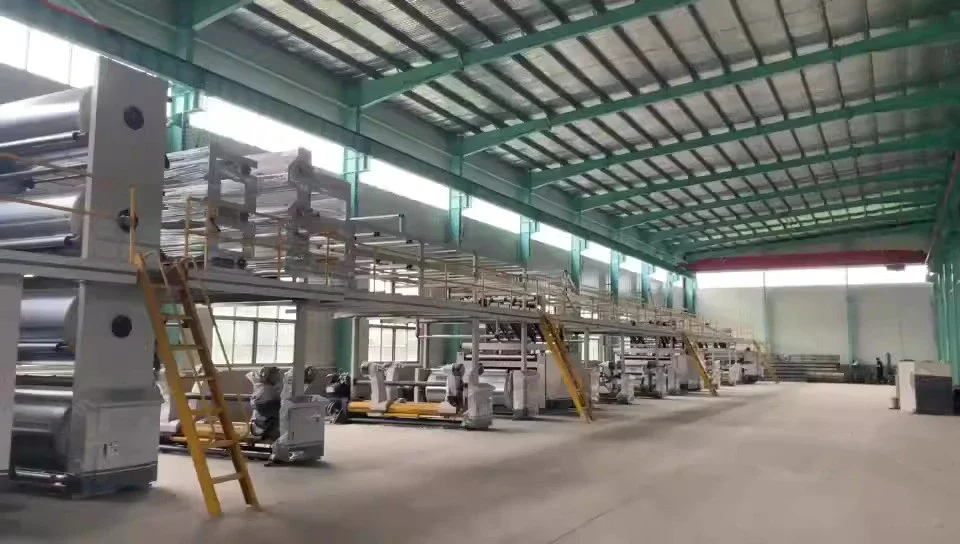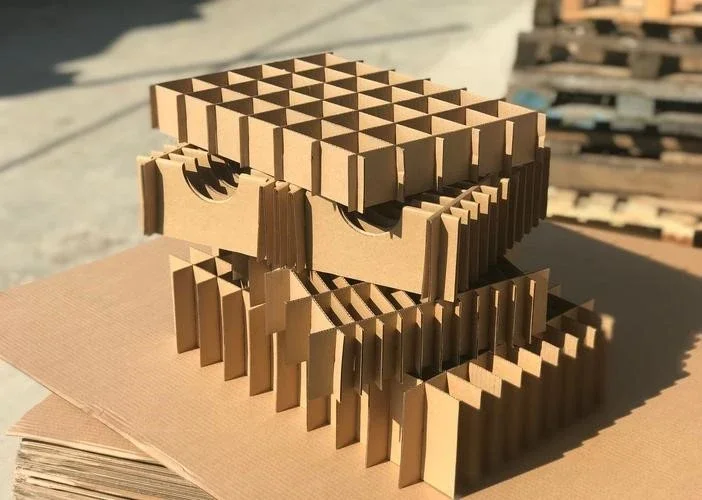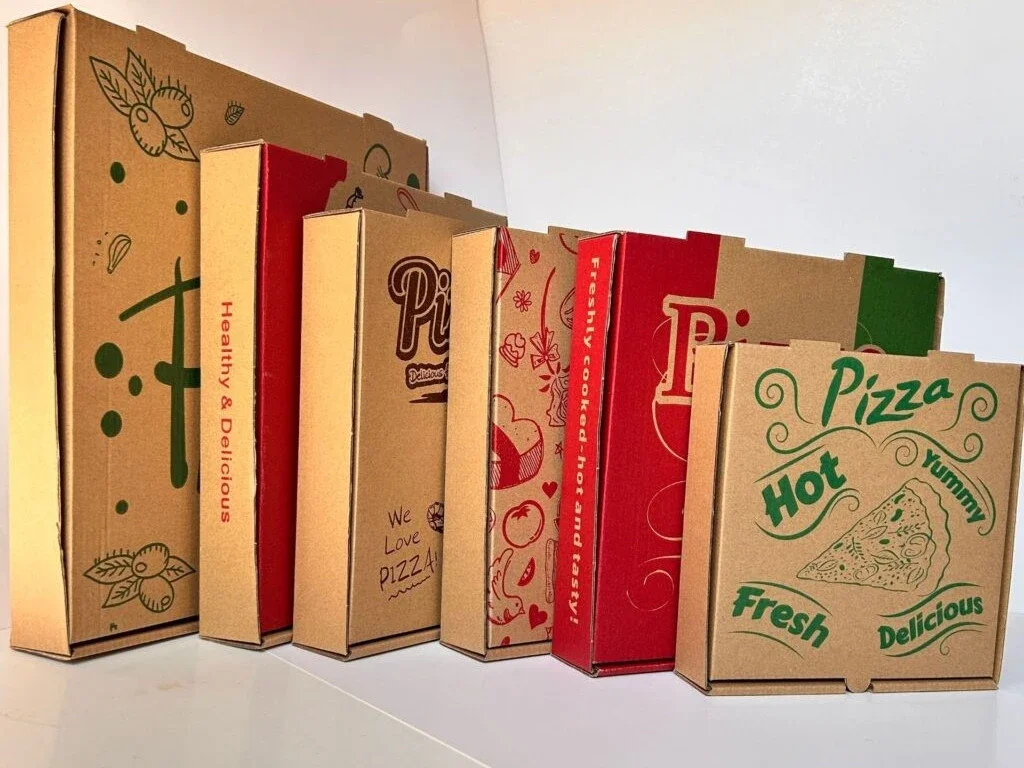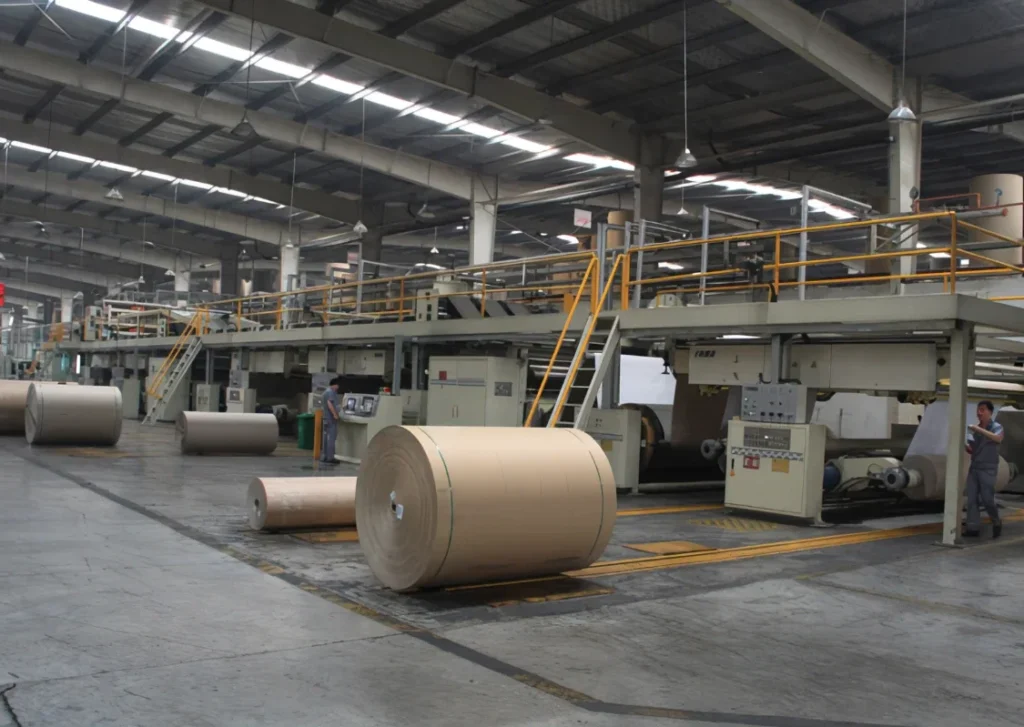
Corrugated board is the backbone of the packaging industry. Almost every shipping box you see starts life on a corrugated board production line—also called a corrugator machine.
This guide explains what it is, which machines are included, how the manufacturing process works, the types of corrugated production lines, and how to choose and maintain one for the best results.
1. What Is a Corrugated Board Production Line?
A corrugated board production line is a complete set of machinery that turns rolls of raw paper—called linerboard and corrugating medium—into finished corrugated board sheets or rolls.
The production line shapes the paper into flutes (the wave-like middle layer), applies adhesive, bonds it with flat liners, and produces continuous sheets ready for storage or further converting.
Note: This process does not include downstream printing, die cutting, or box folding—those are separate converting operations.
2. What Machines are Included in a Corrugated Board Production Line
A typical corrugator contains several core machines arranged in sequence:
- Paper Reel Stands / Unwinders – Hold and feed paper rolls into the line with precise tension control.
- Preheaters / Preconditioners – Warm and condition the paper for optimal flute forming and adhesive bonding.
- Single Facer – Shapes the corrugating medium into flutes using corrugating rolls.
- Glue Application Unit – Applies starch adhesive to the flute tips.
- Double Facer (Combining, Drying, and Cooling Section) – Bonds the glued single-faced web to the second liner (or additional liners for multi-wall). Heated plates cure the adhesive, and integrated cooling sections stabilize the board’s moisture and flatness.
- Slitter-Scorer – Trims edges and cuts board into the required widths.
- NC Cut-off (Cut-off Knife) – Cuts the continuous corrugated board into sheets of precise length at high speed.
- Stacker or rewinder – Stacks cut sheets or rewinds board into rolls for easy handling and transport.
Optional Machines:
- Automatic Splicer – Changes paper rolls automatically without stopping the line, reducing downtime and waste.
- Starch Preparation System – Prepares and supplies the starch adhesive with controlled viscosity and temperature for consistent bonding.
- Steam Heating System – Supplies and controls steam for preheaters and double facer heating plates.
- Production Management System (PMS) – Monitors, records, and optimizes production parameters for efficiency and quality control.
3. What is Manufacturing Process of Corrugated Cardboard?
The corrugated board manufacturing process follows a precise, continuous flow:
- Raw Material Feeding – Paper rolls are loaded onto reel stands and fed into the line.
- Preheating – The paper is heated and sometimes humidified to make it flexible and ready for corrugation.
- Corrugating – The medium passes through corrugating rolls to form flutes.
- Glue Application – Starch adhesive is applied to the flute tips.
- Combining – The glued flute web is pressed against a liner to form single-faced board; in double facer, it’s bonded to another liner.
- Drying and Cooling – The board passes through heated plates and cooling sections to stabilize and prevent warping.
- Slitting and Trimming – The continuous sheet is cut to width and edges are trimmed.
- Stacking or Winding – Finished board is stacked in sheets or wound into rolls for storage.
4. Types of Corrugated Board Production Lines
Production lines can be classified in different ways:
By Automation Level
- Manual / Small Lines – Low speed, basic equipment, suited for small orders.
- Semi-Automatic – Some automation in feeding, glue dosing, and cutting.
- Fully Automatic – High-speed, integrated systems with advanced process control.
By Board Type
- Single-Face – One liner and one corrugated medium.
- Single-Wall – Two liners and one corrugated layer.
- Double/Triple-Wall – Multiple corrugated layers for extra strength.
By Speed
- Low-Speed: usually about 50-60m/min;
- Medium-Speed: 80–150 m/min.
- High-Speed: Above 150 m/min, some exceeding 350-400 m/min.
By Working Width
- Ranges from narrow (around 1,400 mm) to extra-wide (over 2,800 mm).
5. How to Choose the Right Corrugated paperboard Production Line
When selecting a corrugator, consider:
- Required Output – Match speed and capacity to your production needs.
- Product Mix – Choose equipment that can handle the flute types and wall combinations you need.
- Working Width – Optimize for your typical order sizes to minimize waste.
- Automation Level – Higher automation reduces labor but increases investment cost.
- Paper Compatibility – Check the grammage range the line can process.
- Utilities – Ensure your facility can supply the necessary steam, electricity, and compressed air.
- After-Sales Support – Access to spare parts, training, and service is essential.
- Factory Layout – Plan space and material flow for efficiency.
- Total Cost of Ownership – Include maintenance, energy use, and spare parts in your calculations.
6. How to Maintain a Corrugated Paperboard Production Line
Good maintenance ensures consistent quality and long machine life:
Daily Checks
- Monitor paper tension, glue temperature, and steam pressure.
- Clean corrugating rolls and belts to prevent defects.
Weekly
- Inspect bearings, chains, and slitter knives.
- Check scoring accuracy and alignment.
Monthly / Quarterly
- Adjust conveyor belt tension.
- Inspect corrugating rolls for wear.
- Clean glue pumps and filters.
Annually
- Perform a full mechanical and electrical inspection.
- Replace worn components and update control software.
Essential Spare Parts
- Corrugating rolls, slitter blades, bearings, glue pumps, sensors, belts, and PLC modules.
7. Common Problems and Quick Fixes
- Weak Bonding: Adjust glue temperature, viscosity, and pressure.
- Warping: Correct preheater settings and control moisture evenly.
- Wrinkles: Fix tension settings and roll alignment.
- Flute Damage: Inspect rolls and adjust steam/humidity.
Conclusion
A corrugated board production line is the heart of any corrugated packaging plant.
By understanding its machines, process, types, and maintenance needs, you can choose the right line for your business and keep it running efficiently.
Whether you operate a small workshop or a large high-speed plant, success depends on matching your production goals with the right technology and maintaining it with care.




